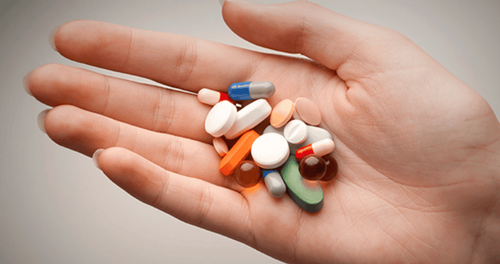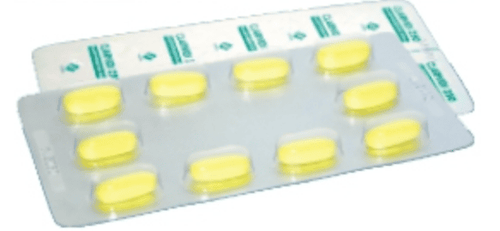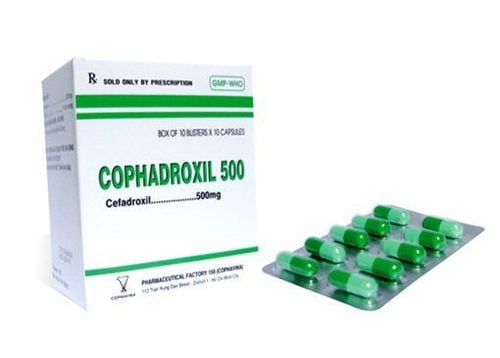This is an automatically translated article.
Drug hypersensitivity syndrome is a severe, unexpected reaction to a drug that affects several organ systems at once. Hypersensitivity to the drug is potentially life-threatening with significant morbidity. It is characterized by fever, rash and involvement of internal organs. Timely diagnosis is very important.1. What is drug hypersensitivity syndrome?
Drug hypersensitivity syndrome is a serious, unexpected reaction of the body to a drug that affects several organs or organ systems at the same time in the body. Usually, drug hypersensitivity syndrome is detected based on a number of manifestations such as:High fever Hematological abnormalities Inflammation of the lymph nodes Inflammation of one or more different organs Drug hypersensitivity syndrome is sometimes also reported. This is known as an eosinophilic reaction or drug hypersensitivity syndrome (DIHS).
Drug hypersensitivity syndrome is relatively rare and occurs mainly in adults. There is also no difference in the incidence of this syndrome between men and women, but drug hypersensitivity syndrome is thought to carry some genetic properties.
The most common drugs that cause drug hypersensitivity syndrome are certain antiepileptic drugs (especially carbamazepine, phenobarbital, and phenytoin), anti-gout drugs, and some antibiotics. In addition, scientists estimate that at least 1 in 10,000 patients develop drug hypersensitivity syndrome when treated with anticonvulsants.
Drug hypersensitivity syndrome rarely occurs with drugs other than those mentioned above. In addition, determining the exact cause of this condition is also relatively difficult because drugs used from days or even weeks ago can also lead to drug hypersensitivity syndrome.
According to the latest studies, about 10% of drug allergies never find a cause.
2. Causes of drug hypersensitivity syndrome Drug hypersensitivity syndrome is a T-cell mediated response due to their delayed activity and the release of large amounts of cytotoxic cytokines that lead to damage to tissues and organs.
As mentioned above, determining the cause of hypersensitivity syndrome is relatively difficult, but doctors believe that some of the following characteristics can increase the risk of developing hypersensitivity syndrome Drugs:
Genetics: People with a family history of drug allergies are more likely to develop them than others. Some liver diseases that interfere with the metabolism and elimination of toxins from drugs can also increase the risk of drug hypersensitivity syndrome. In addition, some viruses such as herpes virus 6 and epstein barr virus are also causes of drug allergies.

Di truyền là một trong các nguyên nhân gây ra hội chứng mẫn cảm với thuốc
3. Symptoms and diagnosis of drug hypersensitivity syndrome
3.1. Symptoms of drug hypersensitivity syndrome Drug hypersensitivity syndrome usually develops within a few days of 2 to 8 weeks of taking the drug.
The most common symptom of this syndrome is a high fever in the range of 38-400C followed by a widespread rash on skin areas with diverse characteristics.
In addition, according to many studies with high reliability, other symptoms that may be encountered in drug hypersensitivity syndrome include:
Appearance of pustules, blisters on the skin. This symptom appears in 80% of drug allergy cases. Facial swelling and edema account for 30% of drug hypersensitivity cases. 25% of drug hypersensitivity cases have signs of mucosal damage (lips, mouth, throat, genitals...). In most cases, a rash develops, which can last several days or even weeks. Symptoms may worsen after the drug is stopped and persist for weeks or even months despite stopping the drug. The severity of the rash is not necessarily related to the extent of the organ system involvement. Later symptoms depend on the organs affected, they may include:
Enlarged lymph nodes in several locations: Up to 75% of drug allergy cases develop this condition. Hematological disorders: Increased number of white blood cells, especially eosinophils, lymphocytes, accompanied by thrombocytopenia, anemia and hemolytic syndrome. Hepatomegaly, hepatitis, liver necrosis can even lead to liver failure. Abnormalities of liver function are found in about 70-90% of patients with drug hypersensitivity. About 10% of drug allergies affect the kidneys. However, they are usually mild, mainly interstitial nephritis. Renal failure very rare Myocarditis or pericarditis causing chest pain, dyspnea, hypotension. Lung diseases that cause shortness of breath and cough such as interstitial pneumonia, pleurisy, pneumonia, and acute respiratory distress syndrome. Neurological diseases such as meningitis, encephalitis, polyneuritis lead to headaches, convulsions, coma or even paralysis. Some symptoms related to the digestive system may be encountered such as: gastritis, intestinal inflammation, pancreatitis, gastrointestinal bleeding, dehydration. In severe cases, acute pancreatitis, acute colitis and several other chronic conditions can also occur. Endocrine abnormalities: Thyroiditis and diabetes mellitus. Muscular disease: Myositis. Eye disease: Uveitis.

Người bệnh có thể xuất hiện các triệu chứng muộn về nội tiết như viêm tuyến giáp
3.2. Diagnosis of drug hypersensitivity syndrome Diagnosis of drug allergy is based on the clinical presentation of 3 symptoms: High fever, persistent skin rash and other organ manifestations.
Because drug hypersensitivity syndrome can occur up to 8 weeks after taking the drug, it is difficult to determine exactly which drug is the cause of this syndrome. For that reason, the European Registry of Serious Adverse Reactions and Biological Specimens (RegiSCAR) has developed criteria to support the diagnosis of drug hypersensitivity syndrome. Criteria that RegiSCAR gives is that a person diagnosed with drug allergy must meet all of the following factors:
Hospitalization for treatment Suspicious drug-related reactions Acute skin rash Fever above 380C Enlarged lymph nodes at least 2 body sites Involvement of at least one organ Hematologic abnormalities such as decreased platelet count, increased eosinophil count, and abnormal lymphocyte count Also history The results of the patient's skin examination and general health are also the basis for doctors to order some of the following tests:
Skin biopsies often show a dense infiltration of inflammatory cells, including inflammatory cells. including lymphocytes as well as eosinophils. Blood tests may include: Complete blood count and coagulation studies Biochemical tests: Liver, kidney, muscle function tests Viral serology: Determining presence of hepatitis B virus, inflammation liver C , EBV , CMV and HHV-6 . Endocrine function tests: Thyroid, glucose levels Urine tests: Evaluation of kidney damage Electrocardiogram, ultrasound and chest X-ray to evaluate the heart and lungs.
4. Treatment of drug hypersensitivity syndrome
The most important thing is to immediately stop taking all suspected drugs, followed by careful monitoring and supportive care. In addition, early detection of symptoms of drug hypersensitivity is also very important.Systemic steroids are often used in severe cases involving dermatitis, pneumonia, or hepatitis. However, once effective, steroids should be reduced gradually to avoid recurrence of the syndrome when the dose is reduced.

Điều trị hội chứng mẫn cảm với thuốc cần được thực hiện và theo dõi cẩn thận
Supportive treatment of the rash may include:
Topical corticosteroid dressings Oral antihistamines Replenishment of water and electrolytes Drug hypersensitivity is a relatively rare syndrome, even with the drugs detected only 1 allergy out of 10,000 users. Complications of drug hypersensitivity syndrome are relatively serious, but most patients recover completely from a drug allergy within a few weeks or months.
Although there are no specific studies, patients recovering from drug hypersensitivity syndrome are thought to have a higher risk of developing autoimmune diseases.
Please dial HOTLINE for more information or register for an appointment HERE. Download MyVinmec app to make appointments faster and to manage your bookings easily.
Articles source references: uptodate.com, sciencedirect.com, dermnetnz.org












